Florence owes much of its late Baroque facies to a Neapolitan. If there had been no Luca Giordano, who knows what paths the great decoration of the early 18th century in Florence would have taken: perhaps, spectacular frescoes such as Giuseppe Nicola Nasini’s at the Church of the Montalve would never have been born, Ranieri del Pace’s angels would not be flying between the vaults of San Jacopo Soprarno, we would never have seen Giovanni Camillo Sagrestani’s airy allegories at Palazzo Tempi. These are works little known to most, masterpieces concealed by the cliché of Florence as the “cradle of the Renaissance,” but which well represent the vitality of the Tuscan capital at the turn of the 17th and 18th centuries. And Luca Giordano was something of a watershed: an exhibition, Luca Giordano. A Baroque Master in Florence, on view until September 5, 2023, at the Medici Riccardi Palace, set up partly in the rooms on the first floor, and partly under the gallery decorated by Giordano himself with the Apotheosis of the Medici, perhaps the best-known Baroque masterpiece in Florence, which had nonetheless experienced other significant feats before then: Volterrano’s frescoes in Santa Maria Maggiore, Pietro da Cortona’s in the rooms of the Pitti Palace, and Filippo Maria Galletti’s dazzling dome in the church of Santi Michele e Gaetano, the richest temple of seventeenth-century Florence. In outlining the reasons for the exhibition, curators Riccardo Lattuada, Giuseppe Scavizzi and Valentina Zucchi recall that “Giordano’s contribution to the culture of Florence was relevant in itself, but also for the strategic role it played in the history of Florentine art, which with him was opening [...] to the legitimization and appreciation of other schools of painting,” and that in this sense Giordano “represents the evolution from the full Baroque,” that of Pietro da Cortona, “to the late Baroque, or Barocchetto as it may be called: a path that can be defined as proper to Florentine art and to the same coeval Italian temperament.”
It is not, however, on the extent of Giordano’s contribution to Florentine culture that the exhibition mainly focuses on: another review had already intervened on this aspect, which was held in 2005 at Palazzo Medici Riccardi, entitled Stanze Segrete. The Riccardi’s Artists. The “Memories” of Luca Giordano and Beyond, curated by Cristina Giannini, and which had presented to the Florentine public a comparison that, eighteen years on, is being reproposed by Lattuada, Scavizzi and Zucchi, namely that between the “memories” of the National Gallery in London, the series of paintings by Giordano that reproduce the decorations of the Palace’s gallery and that were once thought to be preparatory sketchesî, and the decorations themselves, since displayed directly beneath the spectacular wall paintings that the Neapolitan artist executed for the Riccardi. The new exhibition insists above all on the ties between the artist and the city, the circumstances that brought him from Naples to Florence, and his relations with Florentine patrons.
Luca Giordano is said to have arrived in Florence, called by the Corsini family to fresco the family chapel in Santa Maria del Carmine (with the Glory of St. Andrea Corsini, another great Baroque masterpiece), in 1682, although the basis for his arrival goes back much earlier. First of all, to a passage in the mid-1660s, when the artist, in his early thirties, was on his way to Venice: according to Filippo Baldinucci, during this stopover he allegedly executed a painting for Grand Duke Ferdinand, although it is difficult to tell which painting the historiographer is referring to. What is certain is that from this period onward his paintings begin to appear in Florence, purchased by Florentine collectors: it is highly likely that his early reputation as a talented and especially fast artist had already spread to Florence, regardless of the brief period he spent there on his way to Venice. However, it was from the 1670s that the relationship between the artist and the city was consolidated, especially through the Florentines who resided for work in Naples, starting with Abbot Pietro Andrea Andreini and some members of the Del Rosso family, as scholar Elena Fumagalli reconstructs in her catalog essay. And upon his arrival in Florence in 1682, Luca Giordano was a guest of the Del Rosso family itself.

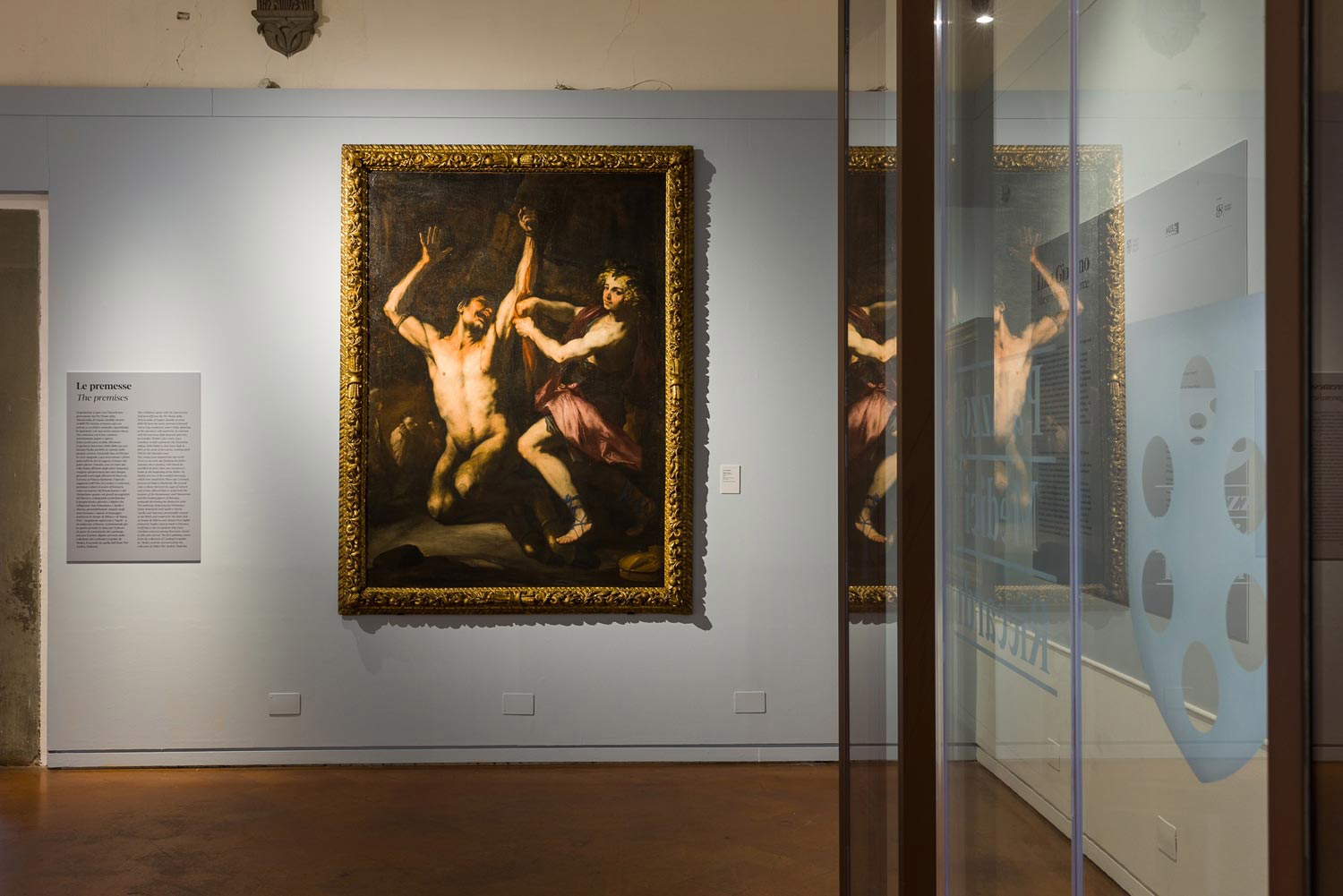
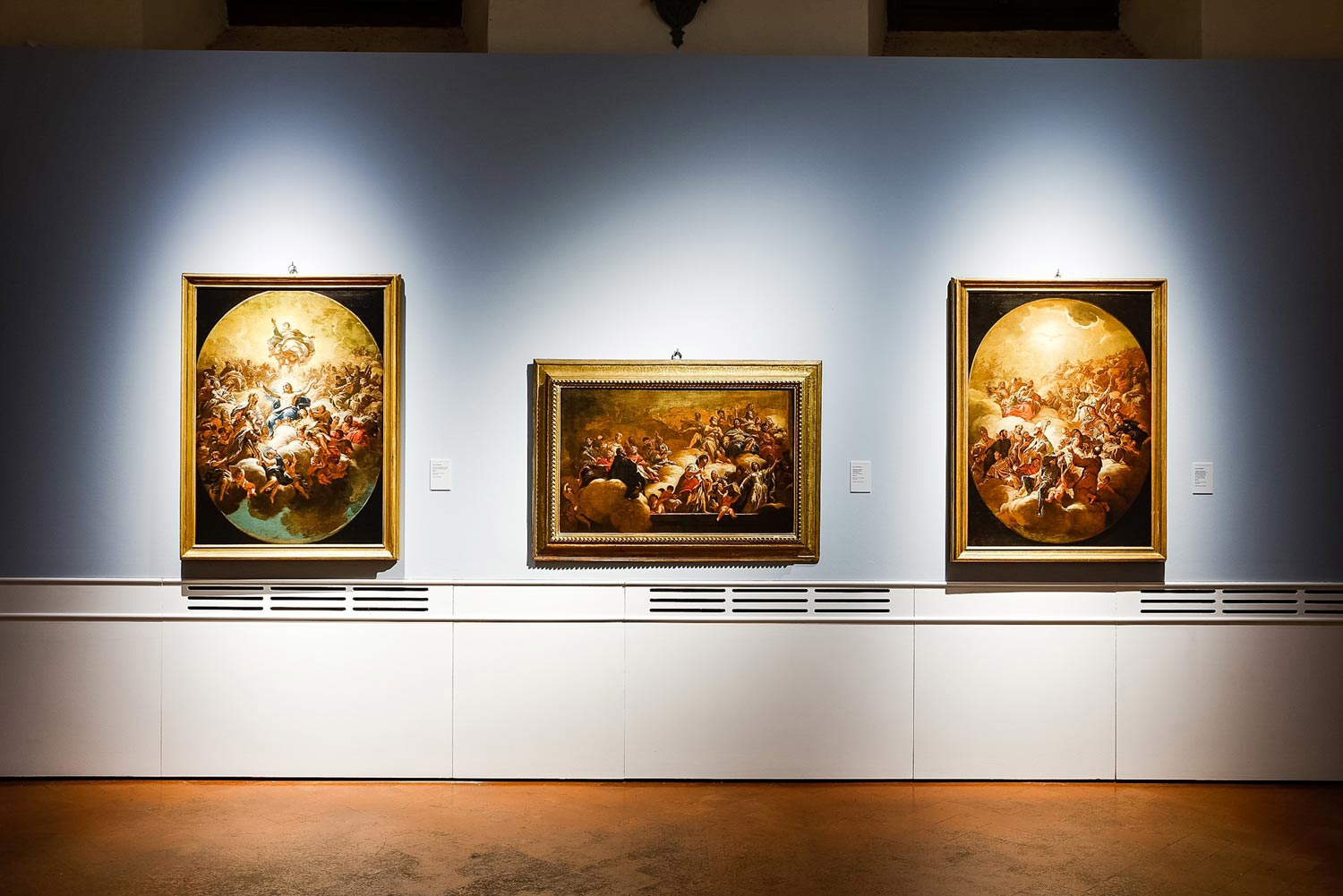
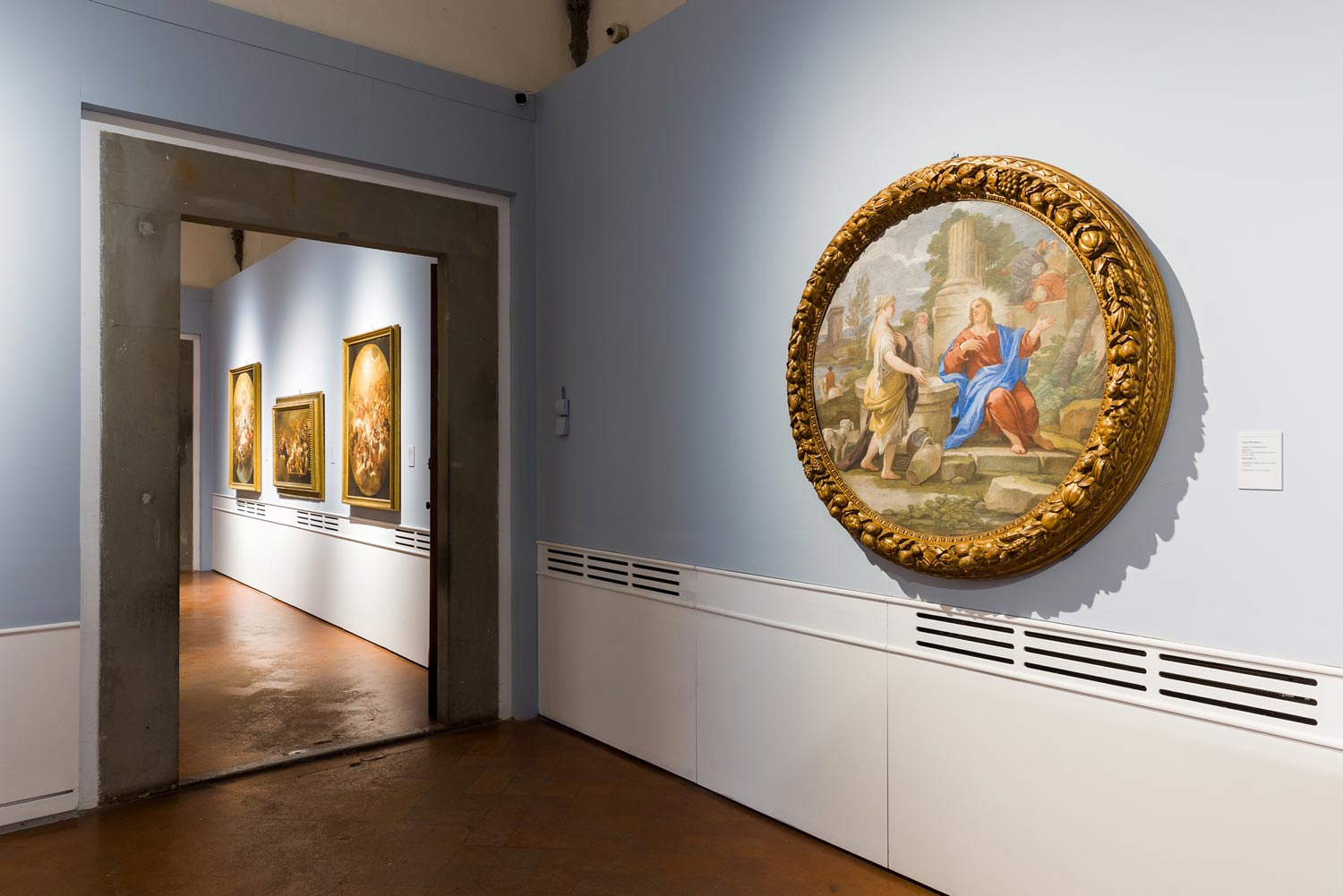
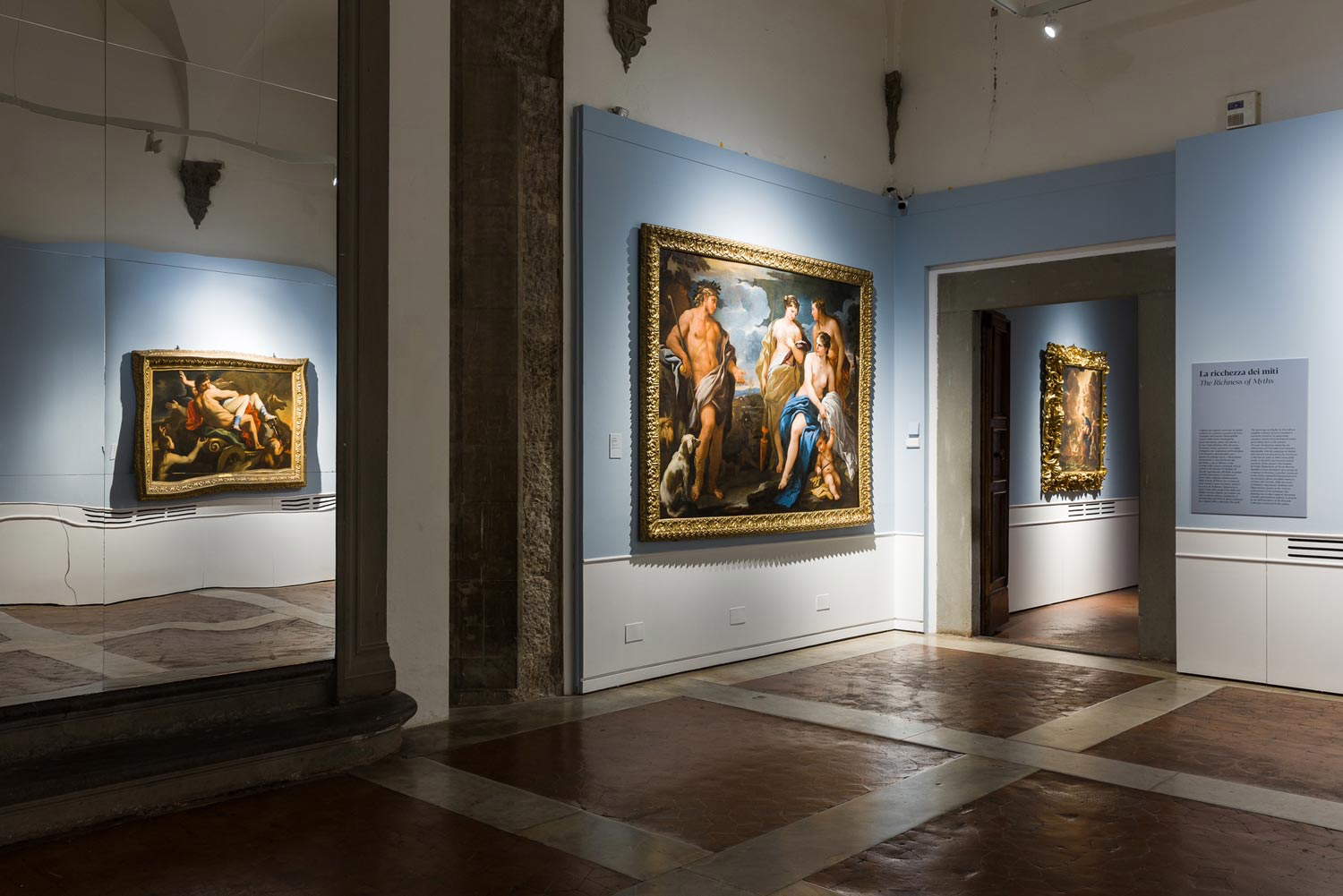
It is precisely from here that the exhibition begins, opening with Luca Giordano’s self-portrait on loan from the Pio Monte della Misericordia in Naples to immediately offer visitors the image the artist gave of himself at the time, probably, of his Florentine sojourn: that is, the image of a profoundly self-confident artist, convinced, with good reason, that he was among the best of his time. In the first section, the two earliest works in the exhibition are arranged, a Saint Sebastian and an Apollo and Marsyas both circa 1665: the former was owned by Cardinal Leopold de’ Medici, one of the greatest collectors of his time (the work appears in the inventory of the collection compiled after his death in 1676), while the painting of a mythological subject was owned by Abbot Andreini. We can see here a young Luca Giordano, still linked to the tenebrista painting of José de Ribera, quite far from the Luca Giordano who would express himself in the great Florentine undertakings, but already able to arouse the interest of art lovers in Florence. The artist’s register would change shortly thereafter: the section on Luca Giordano’s works in the Del Rosso collection briefly gives an account of the transitional phase, with the Neo-Venetian-inspired Christ before Pilate and the Deposition of Christ from the Cross, which still feels the effects of Ribera’s dramas but is already beginning to veer toward a looser, more fluid painting style. Both works are now in the Museo dell’Opera del Duomo in Siena, while in ancient times they were in the collection of the Del Rosso family (just like another splendid “transitional” work, unfortunately absent from the exhibition but accounted for in the catalog, namely the Triumph of Bacchus and Ariadne now in the Herbert Art Gallery in Coventry). The section closes with an interesting work on wicker, a “rare case of portable fresco,” as Riccardo Lattuada defines it, “a genre born in Florence by Giovanni da San Giovanni and continued by his pupil Baldassarre Franceschini known as the Volterrano.” it is evidence of how by now Luca Giordano had settled in Florence (the work was painted for Andrea Del Rosso roughly between 1682 and 1685) and how he wanted to measure himself against the genres that were being practiced in the city, even those that were more unique and required greater technical expertise.
The Luca Giordano of the early 1680s, the Luca Giordano who was was thunderstruck by Pietro da Cortona and who radically revised his own convictions, comes with the next room, all dedicated to the undertaking of the Corsini Chapel in Santa Maria del Carmine, the first important commission that the artist obtained in Florence, evoked in the exhibition through the presence of some significant sketches side by side with two paintings of heroic subjects, in a comparison that is also useful for understanding how, in the same years, Luca Giordano knew how to express himself both on large frescoed walls and on canvases destined for the private rooms of his clients. Alongside the grisaille sketch for a spandrel with theAllegory of the Preaching of the Divine Word, the public gets to see canvases reproducing the chapel’s frescoes, starting with the Glory of St. Andrea Corsini lent by the Uffizi: it is not known, however, whether these are true preparatory models, or memories that the artist painted ex post: it is a fact that, although not identical in every way to the frescoes in the chapel, these canvases well convey the manner of Luca Giordano frescante, an artist inspired by Pietro da Cortona and Giovanni Lanfranco, an artist fond of illusionistic effects, a synthetic artist, inclined to great compositional freedom, a lover of brilliant tones, of crowded compositions that nevertheless leave open wide glimpses of the sky. The two paintings of heroic subject, both starring Aeneas(Aeneas Defeats Turno and Aeneas Cured by Venus) date back to the Corsini commission and were executed at the same time as the frescoes in Santa Maria del Carmine: today one is preserved in the Corsini Gallery in Florence, and the other in the Banco BPM Collection, and have been brought together for the first time on the occasion of the exhibition. They are among the most interesting secular-themed paintings in Jordan’s production: one appreciates, in particular, the reflection on Pietro da Cortona, as Mina Gregori had written ("Luca Giordano departed from theIron Age,“ frescoed by the Cortonese in Palazzo Pitti, ”to represent Aeneas conquers Turno with his rapid and light manner as a virtuoso of the harpsichord, in the painting painted in Fienze and ab antiquo in the Corsini Gallery." Large figures, warm and enveloping light reminiscent of Venetian luminism, classical measure, broad and relaxed gestures, precious coloring: the essence of Luca Giordano’s Cortonism is in these elements.

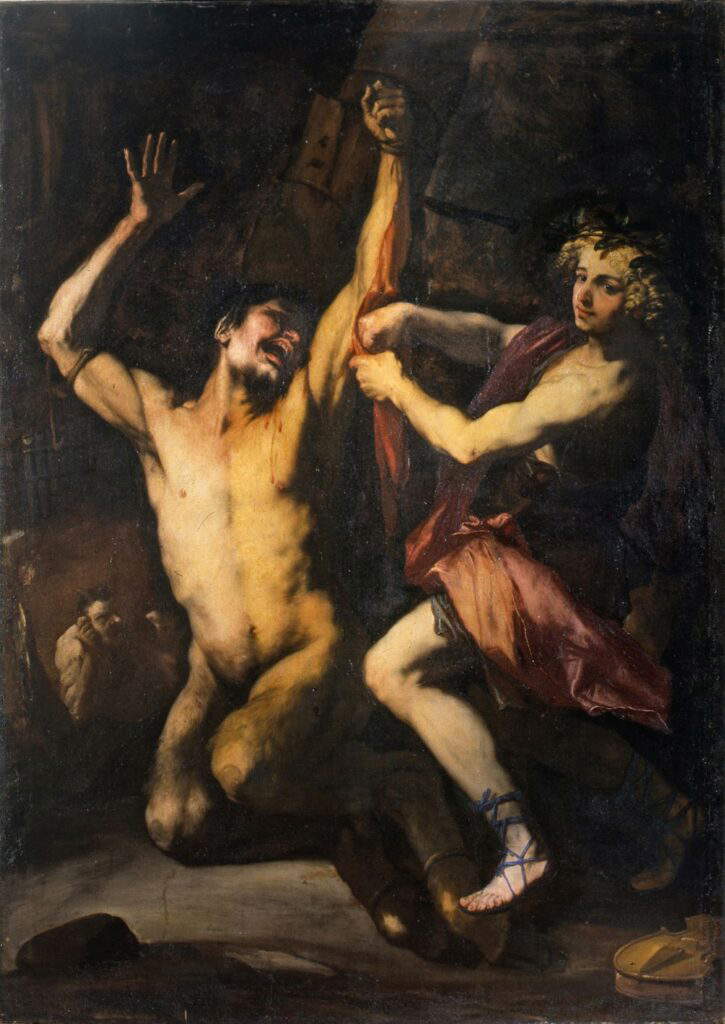
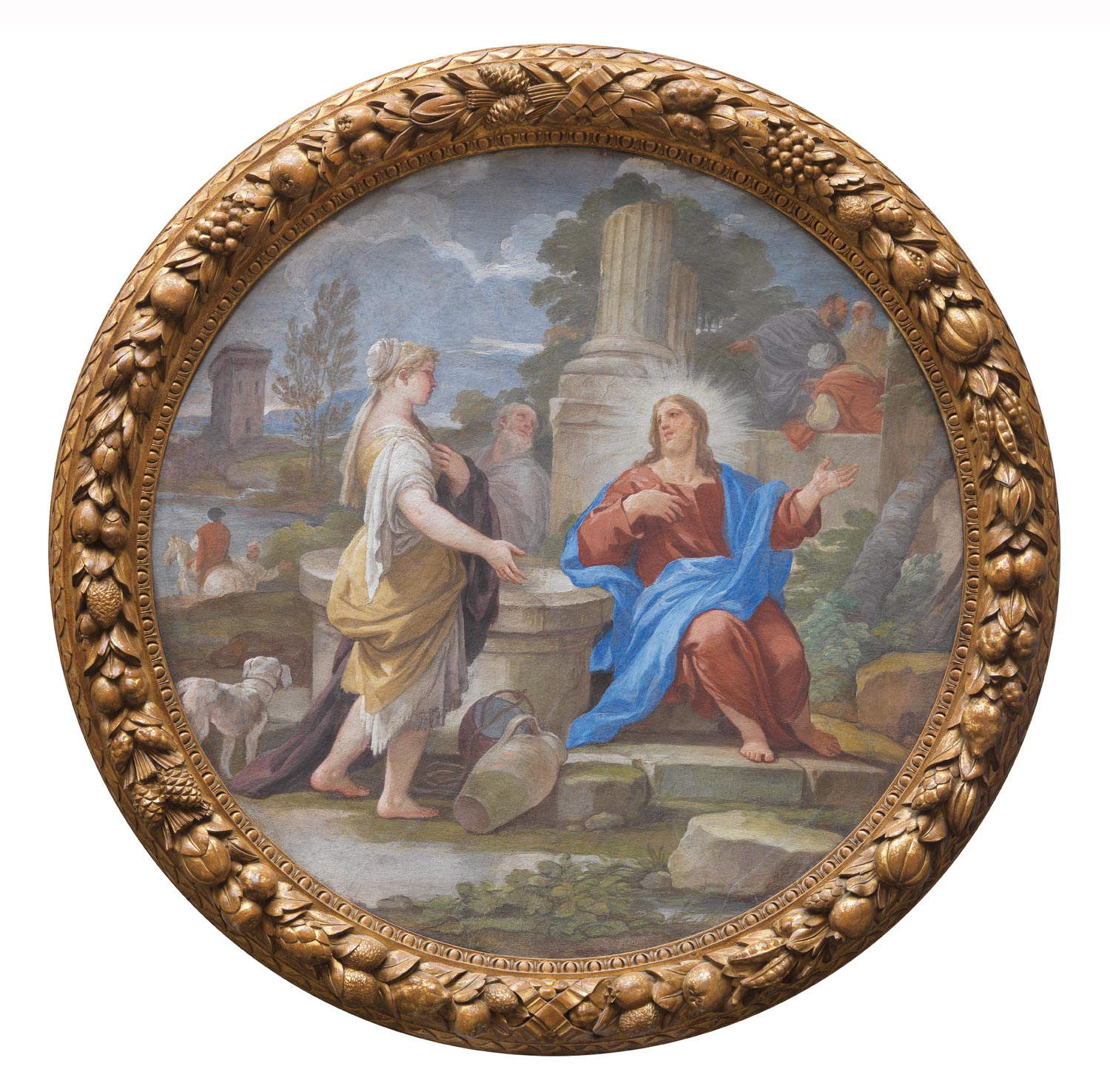

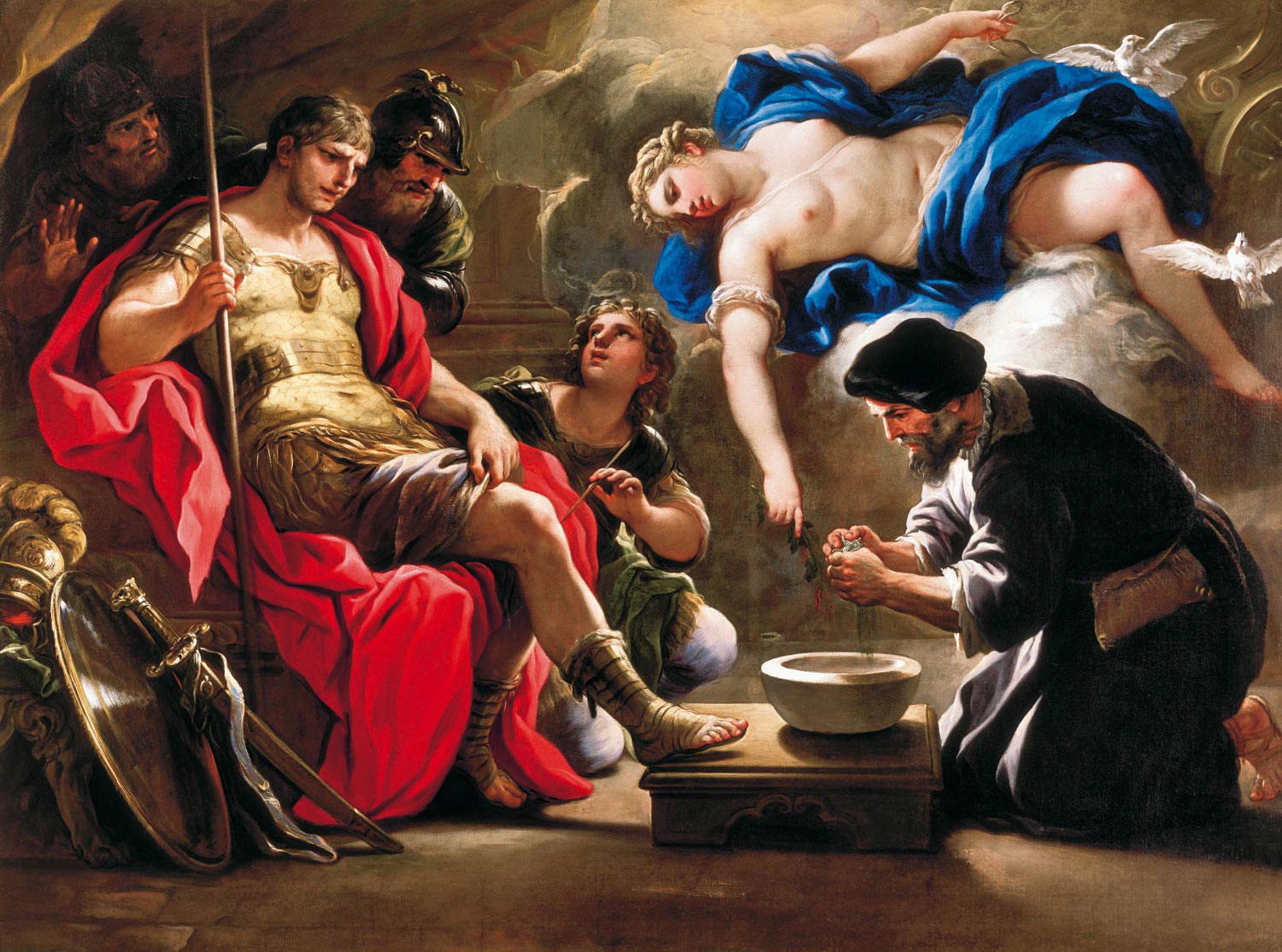


It is up to a small room to give the public an account of the Medici’s commissions: the first direct relationship with Cosimo III dates back to 1685, when the artist painted for the grand duke a Transfiguration now in the Uffizi storerooms (we do not know where it was destined), and other paintings he would paint for Cosimo after his return to Naples, shipping them to Florence from Campania. Before that, however, it was Cosimo’s mother, Vittoria della Rovere, who availed herself of Luca Giordano’s services, and it is on this juncture that the exhibition focuses. On display are two canvases that the artist executed for Vittoria della Rovere: an allegory of Hope, the only known painting on the subject by the painter, a work of the most delicate refinement now housed in a private Neapolitan collection, and a sophisticated Escape to Egypt that sees the Holy Family leaving their homeland at night on a boat, illuminated by the mystical apparition of a chorus of angels who light up the sky with golden gleams. It is one of the pinnacles of Luca Giordano’s sacred production, appreciated even in ancient times for its rapidity of conduction as well as its “vibrant chromatism” and “exuberant style” (so Cristina Gnoni Mavarelli), close to the wall paintings in the gallery of Palazzo Medici Riccardi.
In the last two rooms on the first floor, the curators have thought of two thematic nuclei: the first is on paintings with mythological subjects, the other features works with biblical and historical themes. Prominent among the mythological paintings is another wicker fresco, theAtalanta and Hippomenes also chosen as the guiding image for the exhibition, given its singularity: another work inspired by the works of Pietro da Cortona, and which “in the rapid and very fresh fresco drafting,” as a great expert on Luca Giordano, Silvia Meloni Trkulja, had written when she published the painting in 1972, “has a happy Golden Age spontaneity, not inferior to the most airy pieces in the gallery” (the reference, of course, is to the vault of Palazzo Medici Riccardi). On the adjoining wall, two abductions, the Rape of Deianira and the Rape of Proserpine, call to mind Berninian images (scholar Giuseppe Napoletano has reasonably identified similarities between the Rape of Proserpine and the Nile of the Fountain of Rivers in Rome, and in the floridness of the female bodies has glimpsed Titianesque memories), and closing the circle is finally another obvious piece of Cortonism, the Judgement of Paris on loan from the Museo Civico di Palazzo Chiericati in Vicenza, which is perhaps the most classical of the paintings in the exhibition. Decidedly more eventful, in the next room that closes the ground-floor row, is Marcus Curtius Throwing Himself into the Abyss, a large, little-known painting, conserved in a private collection in London, which with dramatic emphasis depicts the heroic gesture of the young Roman patrician who sacrifices himself with his horse to save Rome, a painting still reminiscent of Bernini’s solutions, as are Jael and Sisara on the neighboring wall, a scene characterized by a return to the somber tones that were typical of the Jordanian style of some 20 years earlier. The itinerary closes with two paintings executed as pendants, a Susanna and the Old Men and a Lot and the Daughters, both in the Stibbert Museum, although their original provenance is unknown, nor do we know whether they are pieces traceable to the artist’s Florentine activity: paintings scarcely considered by critics, they captivate because of the evident sensuality with which Giordano resolves both subjects.
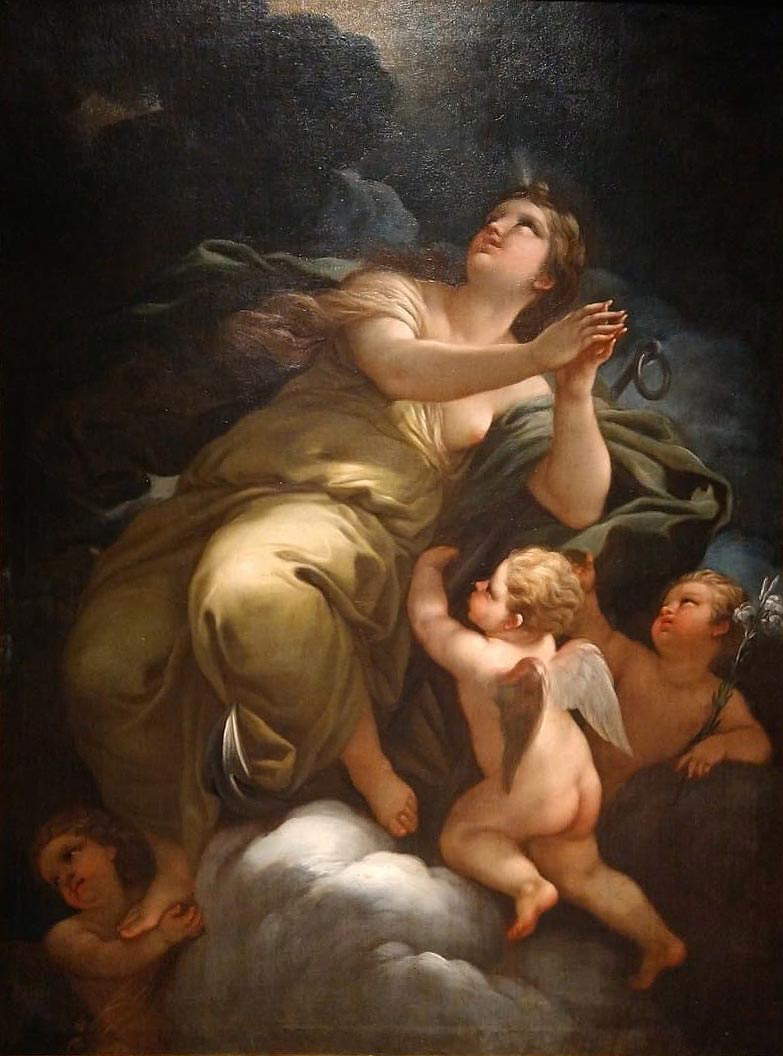


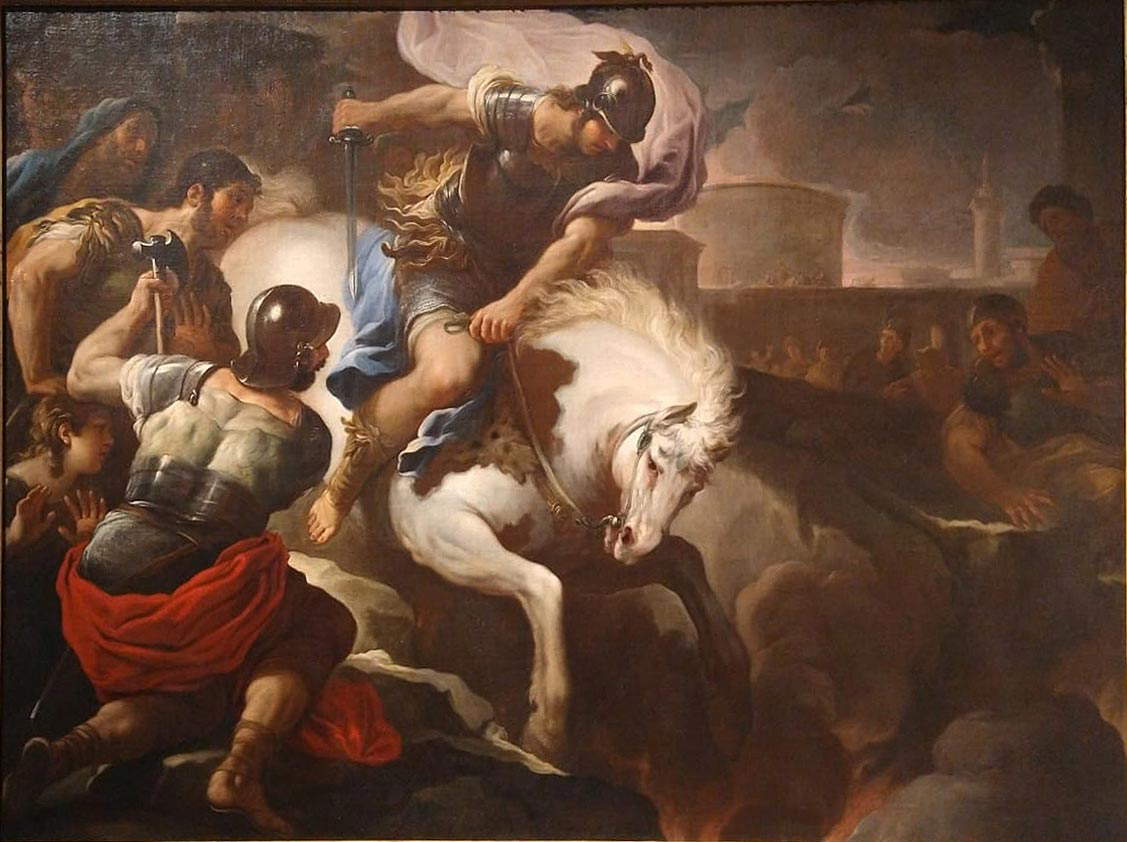
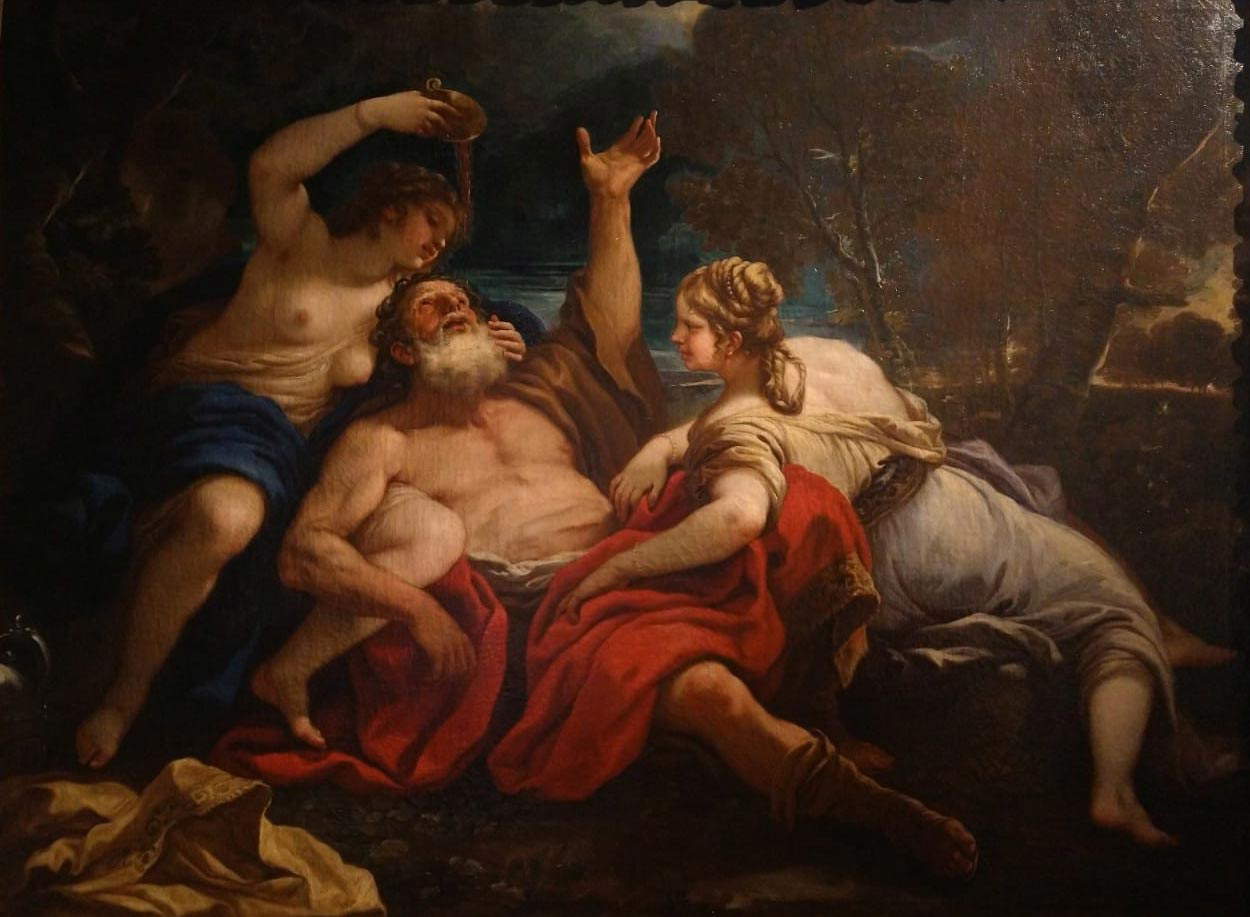
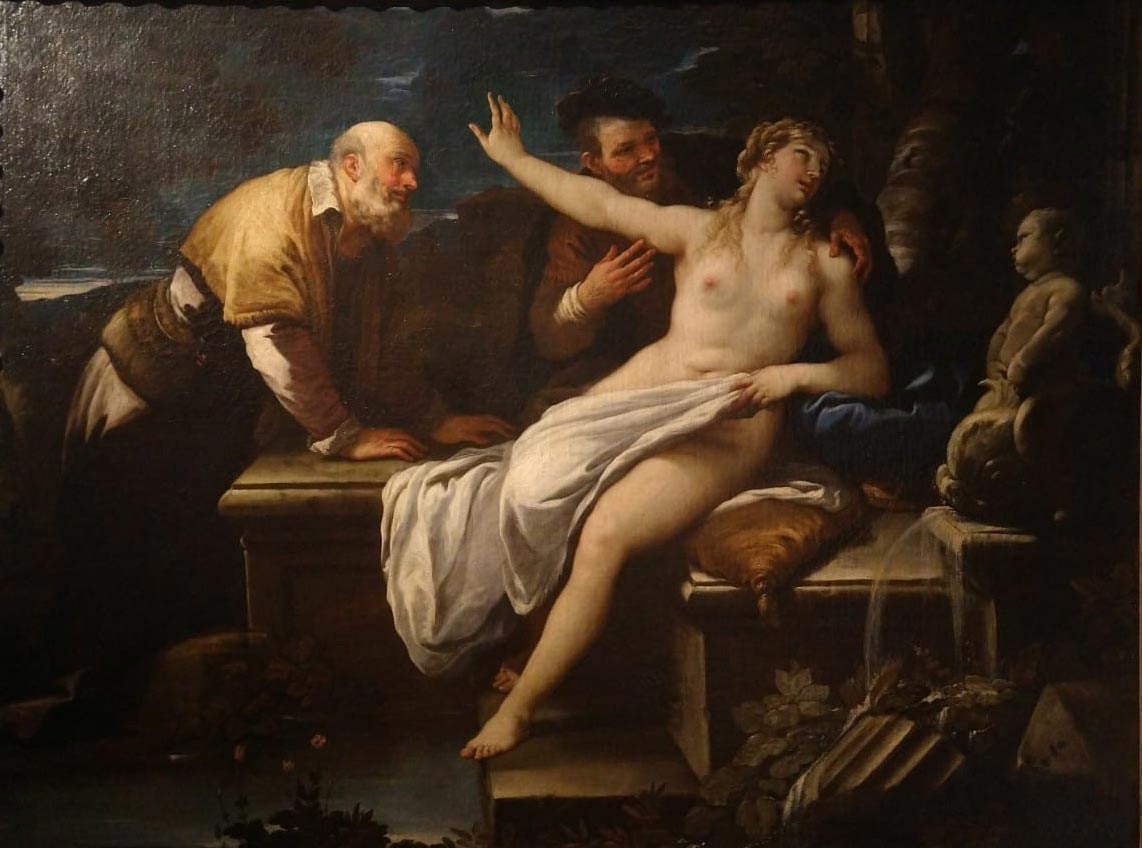
The exhibition is completed in the gallery of Palazzo Medici Riccardi with “keepsakes” from the National Gallery, which came on the English market in the 19th century, following some passages purchased in 1952 by the great scholar Denis Mahon, and ended by donation to the London museum in 2013, after Mahon’s death. As mentioned above, this is nothing new: back in 2005, the London paintings had been displayed underneath the gallery’s decorations, in an arrangement, curated by Perla Gianni Studi, where the works were arranged against the walls, while the arrangement of the current exhibition (by ACME04, Massimo Baldanzi and David Fogli) placed the works within two structures placed in the center of the gallery, with the idea of bringing the “memories” closer to the parts of the great vault decoration they reproduce. We do not know the origin of these paintings: initially most critics agreed that they were works made in preparation for the vault, commissioned by the Riccardi from Luca Giordano in honor of the Medici, whose allies the Riccardi were and to whom they owed part of their fortunes. They are in fact related to a document dating from 1685, thus to the time when the artist was painting the vault: in fact, a letter from Giuliano Bandinelli to Marquis Francesco Riccardi mentions the “stain” that the artist was painting for the wall of the entrance (the term, in the language of the time, indicated a drawing drawn with great rapidity). Then, in 1690, they are mentioned as “models” in the palace inventory. Many scholars have therefore been led to believe that these paintings are preparatory sketches. Until the 2005 exhibition, the only scholar to deviate from this interpretation had been Silvia Meloni Trkulja, who wrote in 1972 that the paintings should be considered “recollections,” that is, paintings executed after the paintings were made, not necessarily faithful in every way, but close enough to the vault to preserve a trace of it. In 2003, Donatella Sparti published two important documents, namely, two payment notes, one from September 1685 and one from March 1686: the latter, in particular, was related to the “recollections.” Other series of paintings with different elements of the vault’s decoration as their subject have since appeared, with the result that the issue is further complicated, and it becomes more difficult to establish the role of each series, as Francesca Whitlum-Cooper notes.
In her essay on the 2005 exhibition, Cristina Giannini, recalling that the paper models have been lost (indeed, it is not credible that Luca Giordano improvised the decoration of the vault), wrote that “Giordano’s stains seem more correctly interpretable today as ’memories’,executed with a fast but not cursive technique, only after he had completed the decoration of the Gallery,” all of which is sustainable “in light of the analysis of the entire series of canvases and the decoration of the Gallery, executed in tempera and not in fresco, with a technique quite different from that which the artist may have borrowed from Pietro da Cortona.” These are, essentially, features of the pictorial drafting, which according to Giannini suggest how the artist constructed the forms, rather than inventing them in the process: the fullness of the forms themselves, the figures that are positioned frontally (and thus not foreshortened subtly as would have been necessary in a preparatory sketch), the confidence of the brushstrokes, the different preparation of the canvases, and the division of some subjects (such as the Rape of Proserpine and theAllegory of Agriculture, which in the London canvases do not continue with contiuity), are all elements that suggest a later execution.
 Arrangement of the
Arrangement of the Layout of the section with recollections
Layout of the section with recollections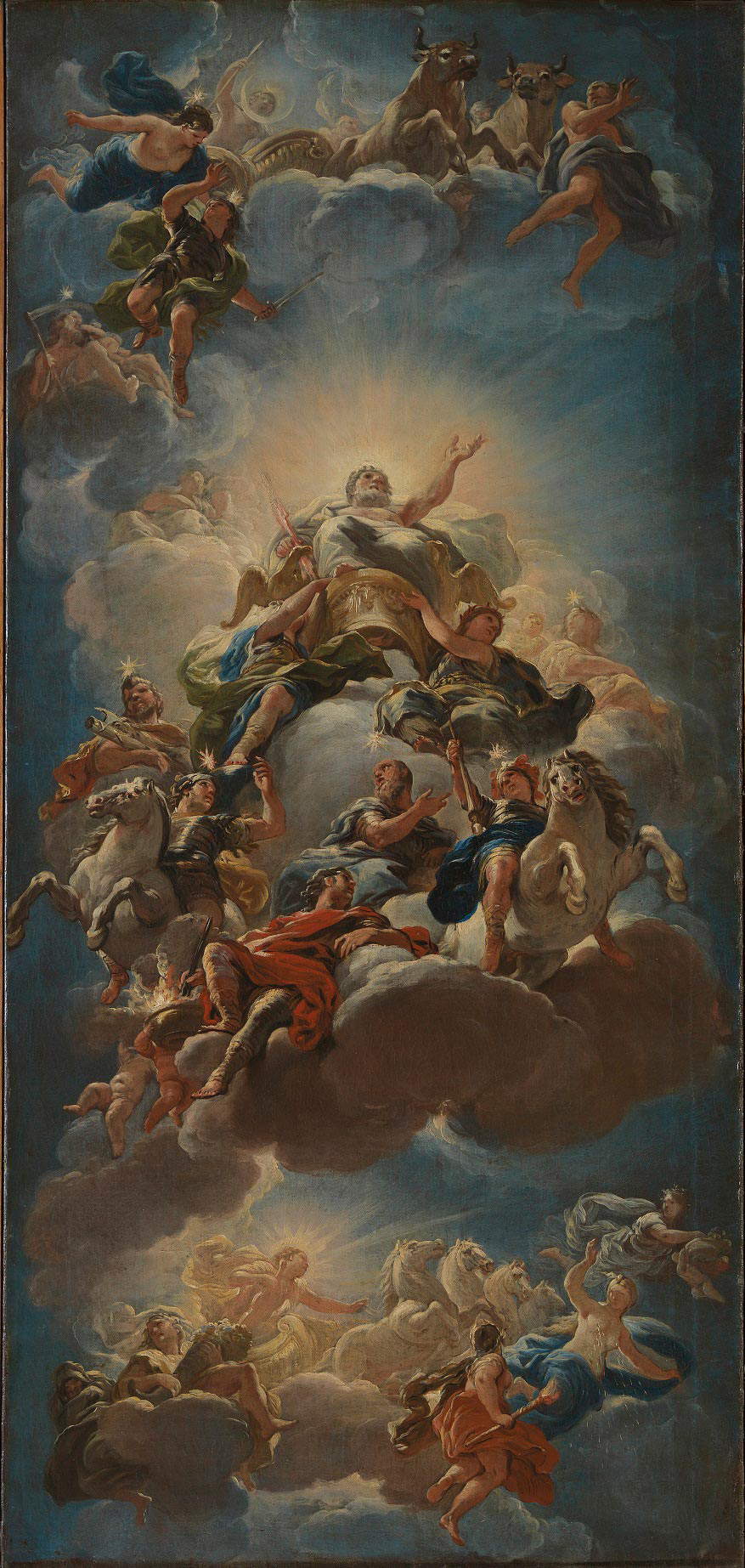
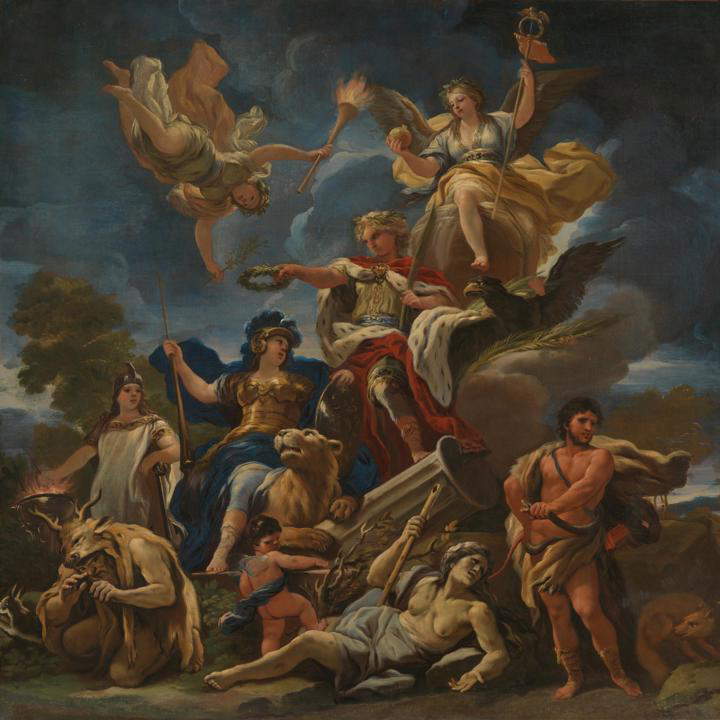
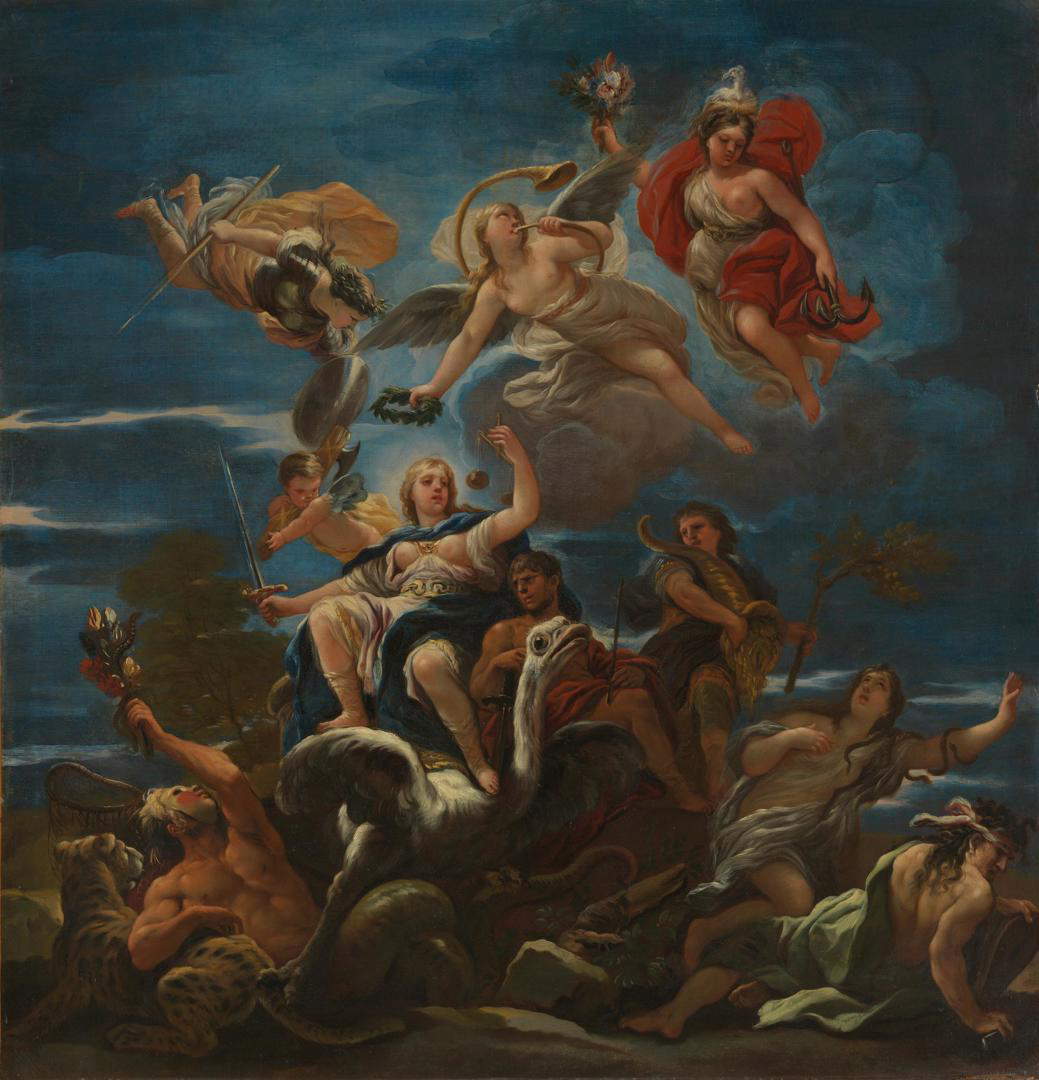
The two sections of the exhibition thus combine to provide a complete picture of Luca Giordano’s versatility, his unparalleled technical skills, the success he achieved with Florentine patrons, even his role in the context of the arts of the time (one could also limit oneself to merely noting what Riccardo Lattuada writes in the catalog, when he explains that “the challenge posed by the vaulting of the gallery in Palazzo Medici Riccardi was not so much to surpass, as to evolve what that Pietro da Cortona had accomplished between Palazzo Pitti and Palazzo Barberini,” and Giordano met the challenge by "paying tribute to the great Tuscan master in a glittering display of admiration and at the same tepmo pushing Berrettini’s joyous imagerie toward the gilded existential and poetic dimension of Arcadia.“) And looking at the works arranged along the tour itinerary also gives us an idea of how Florence reacted: the ”memories“ of the National Gallery are in this sense the most immediate and pregnant example, since we imagine them painted in the wake of the appreciation for Luca Giordano’s works that had spread throughout the city, commissioned by Marquis Riccardi perhaps in order to have a sort of guide, a ”scholarly apparatus" as Whitlum-Cooper defines it, elaborated with the dual purpose of illustrating to guests the complex allegories of the vault, and of showing the qualities of the great Neapolitan painter.
And the city would respond by paying homage to or taking up what Luca Giordano had brought to Florence. The exhibition, as mentioned, focuses not so much on Luca Giordano’s legacy as on his work from his Florentine years, on the innovations the artist brought with him to Tuscany. The exhibition is therefore configured as an investigation aimed at tracing the origins of a history that has remained indelibly imprinted on the artistic fabric of the city. An investigation that was necessarily carried out in summary form, since, as the curators themselves admit, it would have been unthinkable to bring back to Palazzo Medici Riccardi all that the artist had produced for Florence: however, the stages of this significant moment in the history of Florentine and Italian art are well reconstructed, also with the help of a rich and well-structured catalog. It will then be almost natural to indulge in a tour of the city to see how Luca Giordano’s ideas became established in the Florentine artistic context.
Warning: the translation into English of the original Italian article was created using automatic tools. We undertake to review all articles, but we do not guarantee the total absence of inaccuracies in the translation due to the program. You can find the original by clicking on the ITA button. If you find any mistake,please contact us.